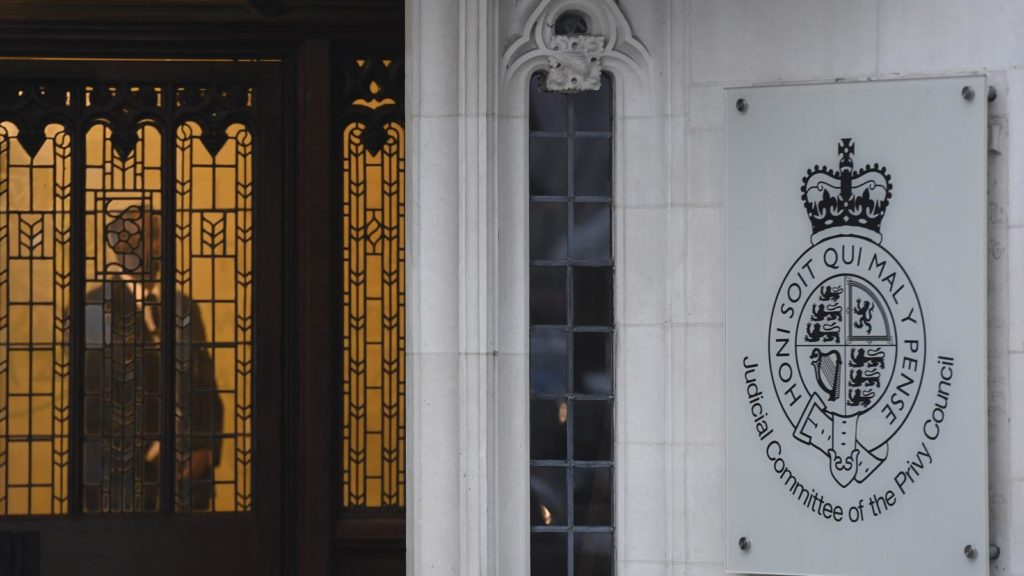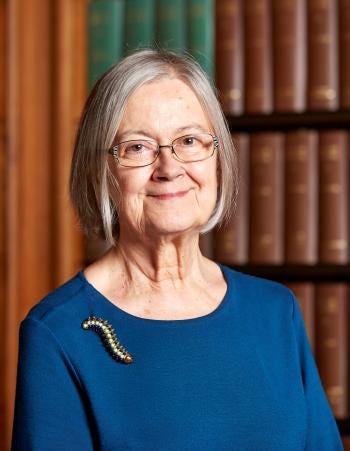What is the UK Supreme Court and who is the woman who heads it?

A security guard inside the UK Supreme Court
The UK Supreme Court has decided that prime minister Boris Johnson acted unlawfully in controversially advising Queen Elizabeth to suspend parliament for five weeks, just 17 days ahead of Brexit.
Today’s decision-by 11 judges-resolves the contradictions between the rulings from London’s High Court and the highest court in Scotland, which has its own separate legal system.
The Supreme Court judges heard evidence on both cases last week, and their decision is binding across the UK.
It’s fair to say that before today’s ruling, many people around the world would not have even known the UK has a Supreme Court, let alone one whose judges are called “justices” in the American style, and who aren’t required to wear white horsehair wigs. Before the three-day court hearing last week, which was streamed live online by the Supreme Court, few would have known its president is a woman.

Brenda Hale
The UK Supreme Court is a modern entity and marks its 10th anniversary on October 1. It was established in 2009 as part of the legislative reform of Britain’s judicial system.
Unlike in centuries past, the new court is physically separated from the British parliament. It is housed in a building across from parliament, and its judges do not sit in the upper chamber, the House of Lords.
In 2017, the Supreme Court cut deep into crusty convention when Brenda Hale, already its deputy president, became president. Hale has a title-Baroness Hale of Richmond-acquired when she became Britain’s first female law lord in 2004. Her chosen coat of arms has a Latin motto that translates to “women are equal to everything,” a theme she consistently champions.
Earlier this year, Hale called for gender equality across the judiciary. As women make up half of the population, “we should be half of judges at least,” she said. Official figures from last year showed that just 29% of British judges are women.
In 1984, Hale co-wrote Women and the Law, the first comprehensive survey of women’s rights in the workplace and within the family.
Hale had a public profile unusual for a judge even before last week’s high-profile hearings. She has appeared in Vogue, been a judge on MasterChef, and has been described as the Beyoncé of the judiciary. Her fondness for bejeweled brooches has prompted jokes that the brooch should have its own Twitter handle.
Hale is sometimes likened to Ruth Bader Ginsburg, one of three women judges on the US Supreme Court. RBG, as Ginsburg is known, has been played by Felicity Jones in Mimi Leder’s film On the Basis of Sex. A children’s book, Equal to Everything: Judge Brenda and the Supreme Court, has been written about Hale.
It’s not certain that Hale and RBG share much more than being trailblazers for women. In Britain, unlike the US, judges are not political appointments. Neither are they lifetime posts. Unlike RBG, Hale will retire next year when she turns 75.
Two similar cases last year-on either side of the Atlantic-also offer some insight into Hale and RBG’s different ways of thinking.
In June 2018, the US Supreme Court ruled in favor of a Colorado baker who refused to create a wedding cake for a gay couple. RBG was one of two dissenting opinions.
In October 2018, the UK Supreme Court similarly agreed that two Belfast bakers were entitled to act in line with their Christian beliefs by refusing an order for a cake with a message supporting gay marriage. Hale said that it was “deeply humiliating” to deny someone service on grounds of legally protected characteristics, which include sexuality. “But that is not what happened in this case,” she said.
Originally published at https://qz.com

